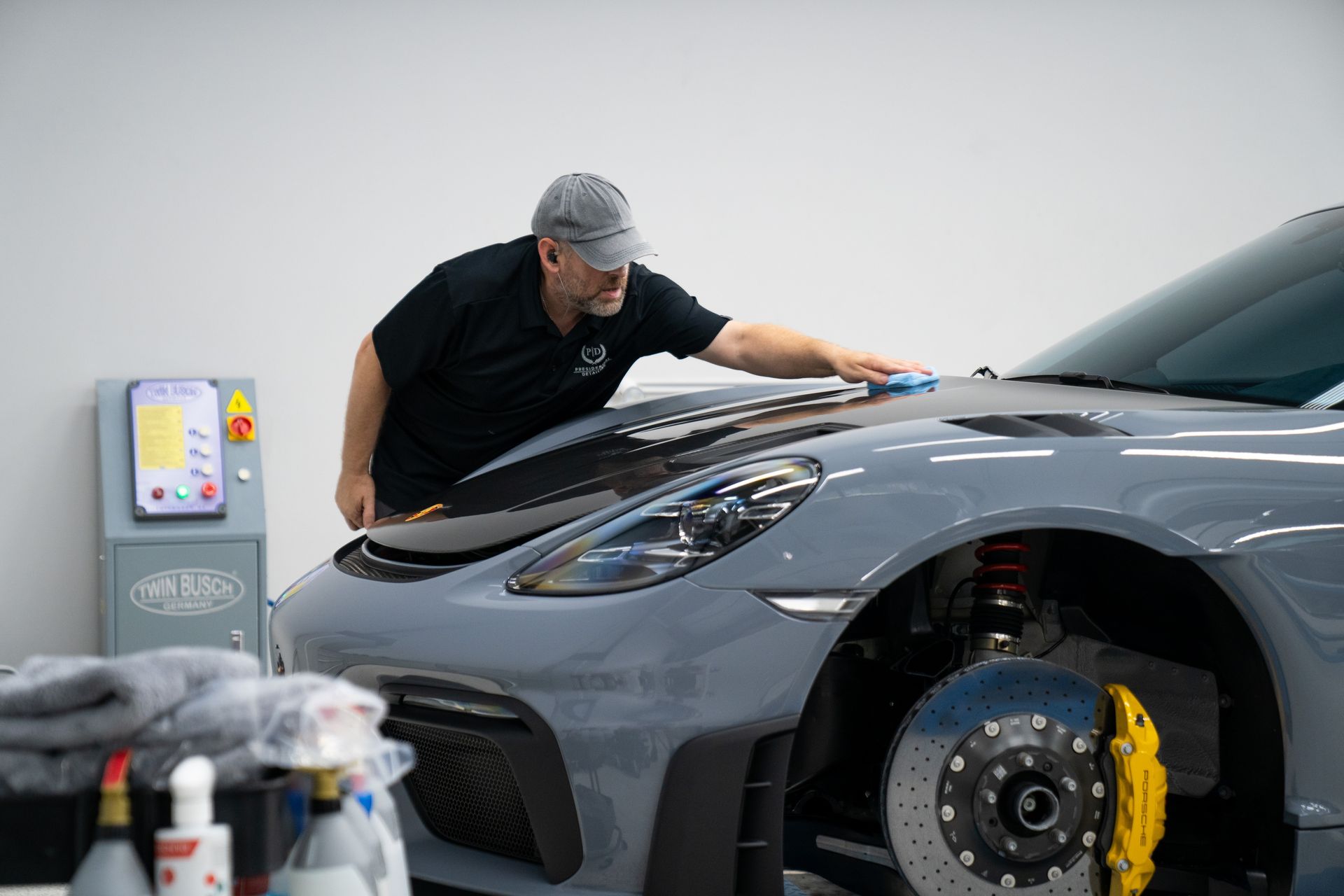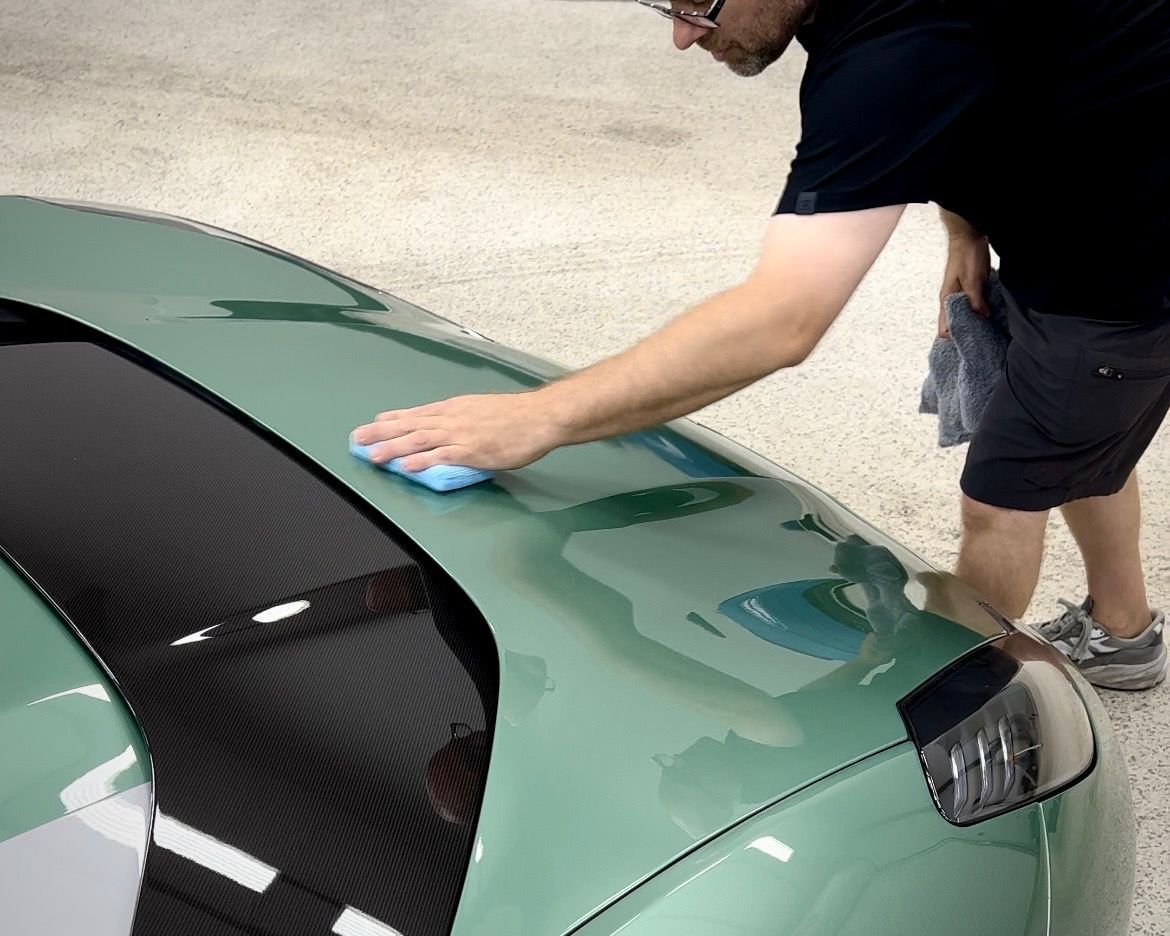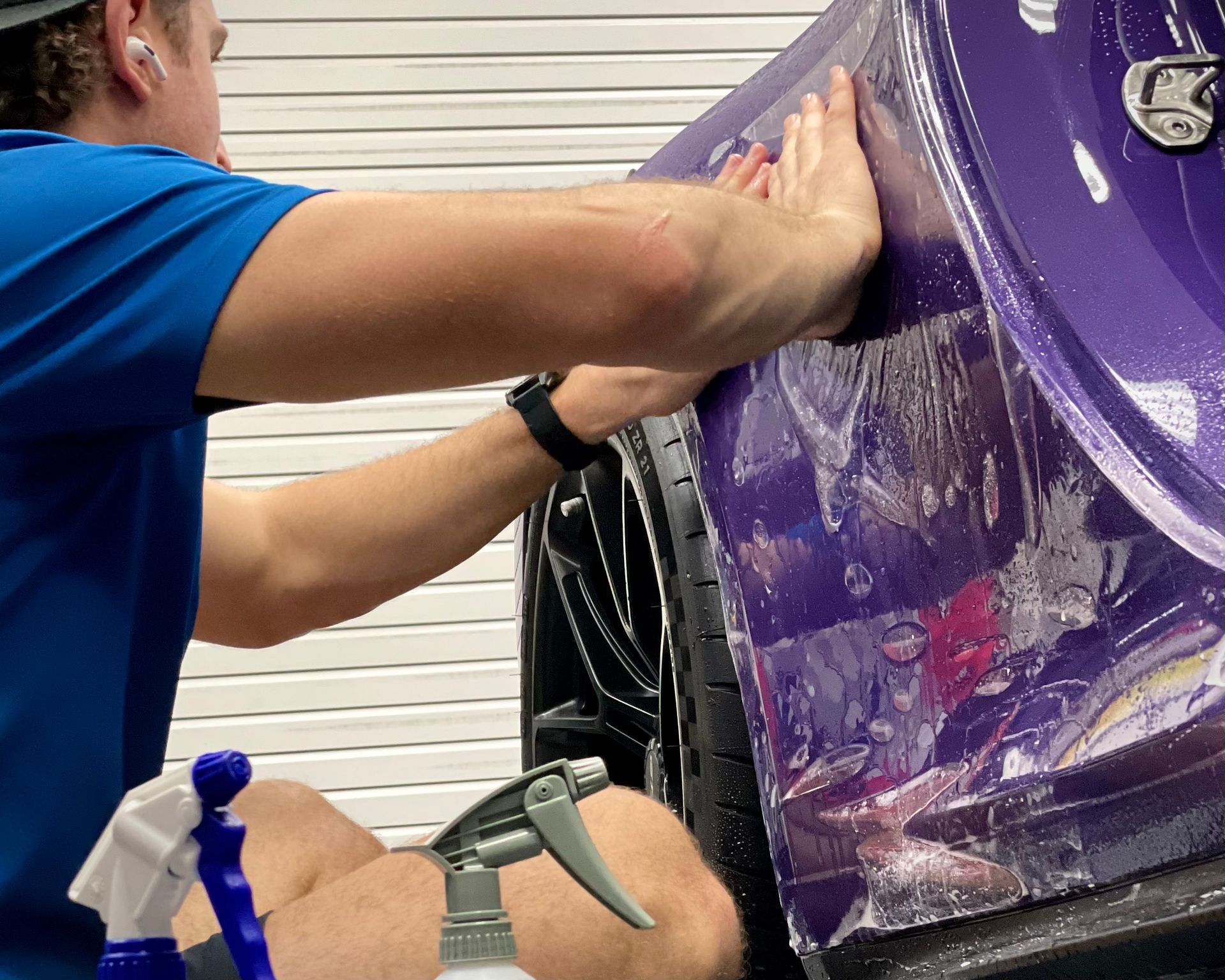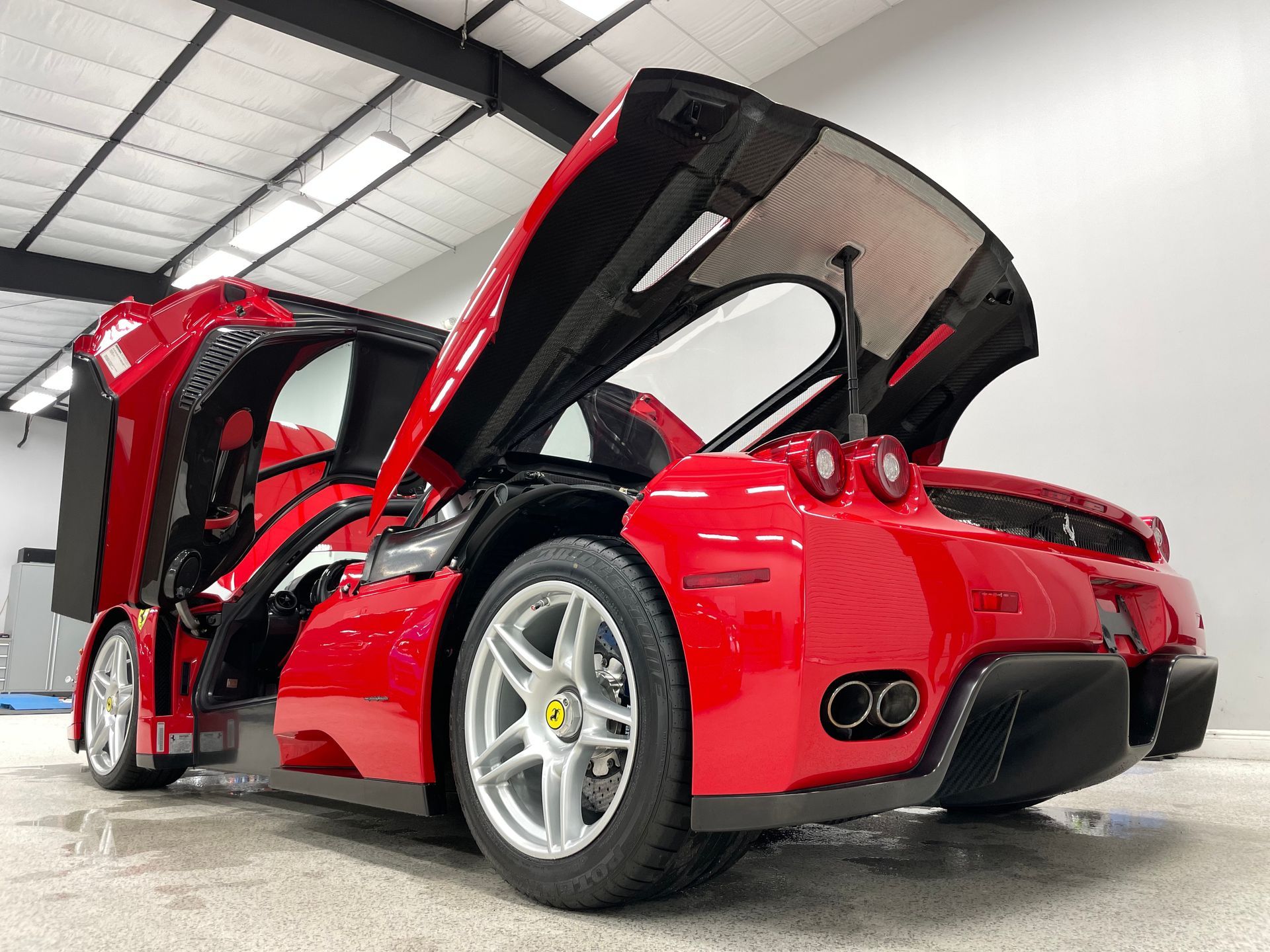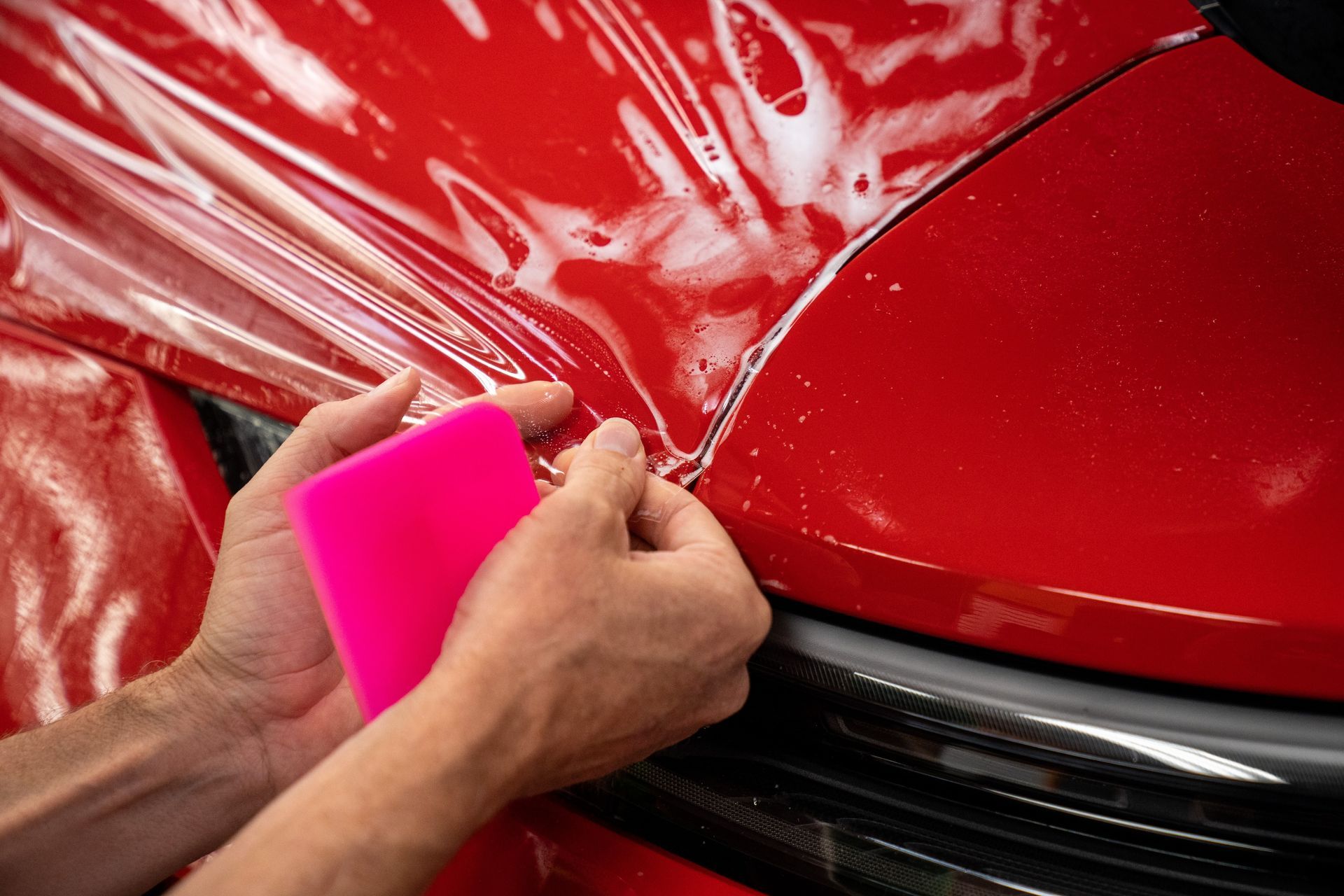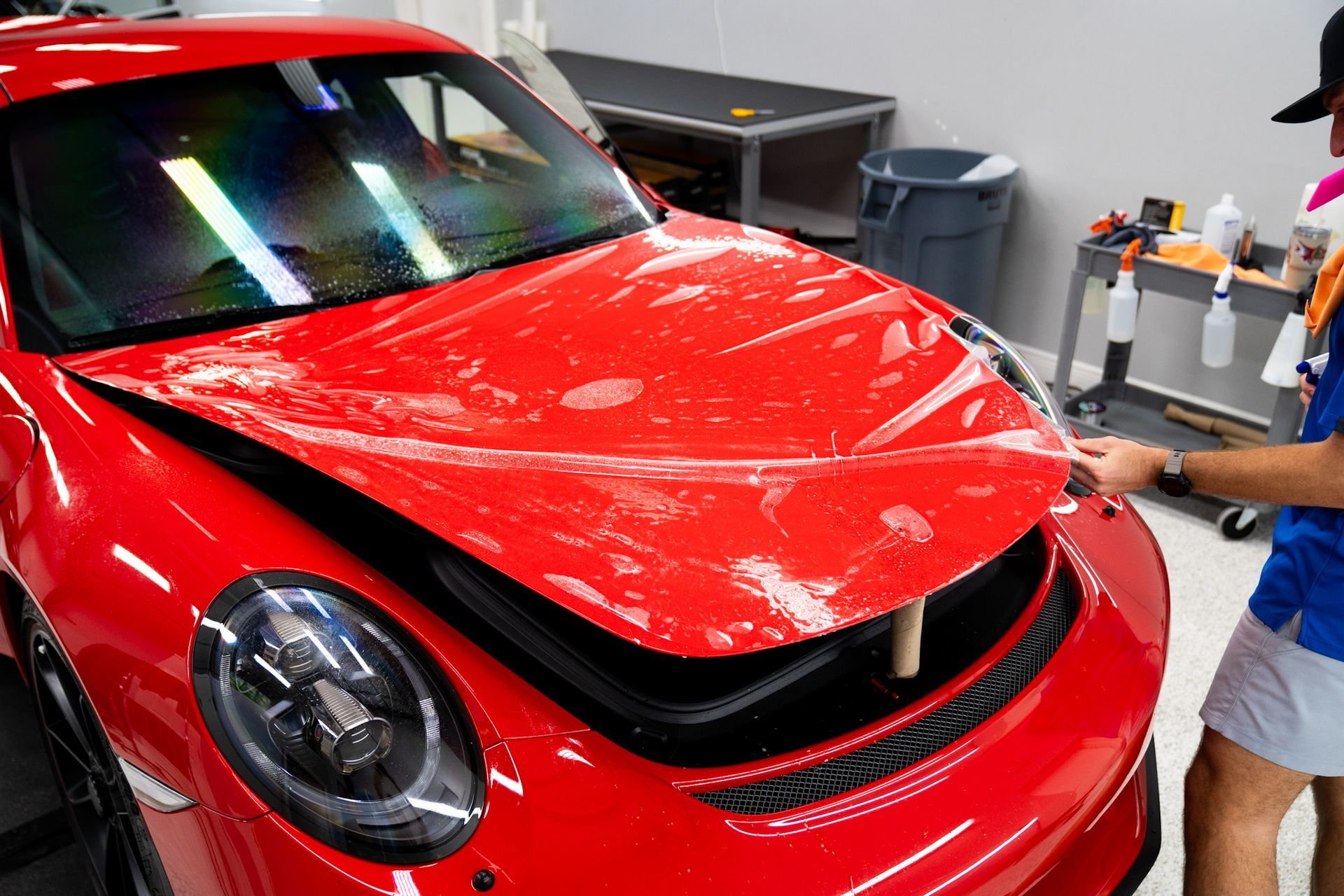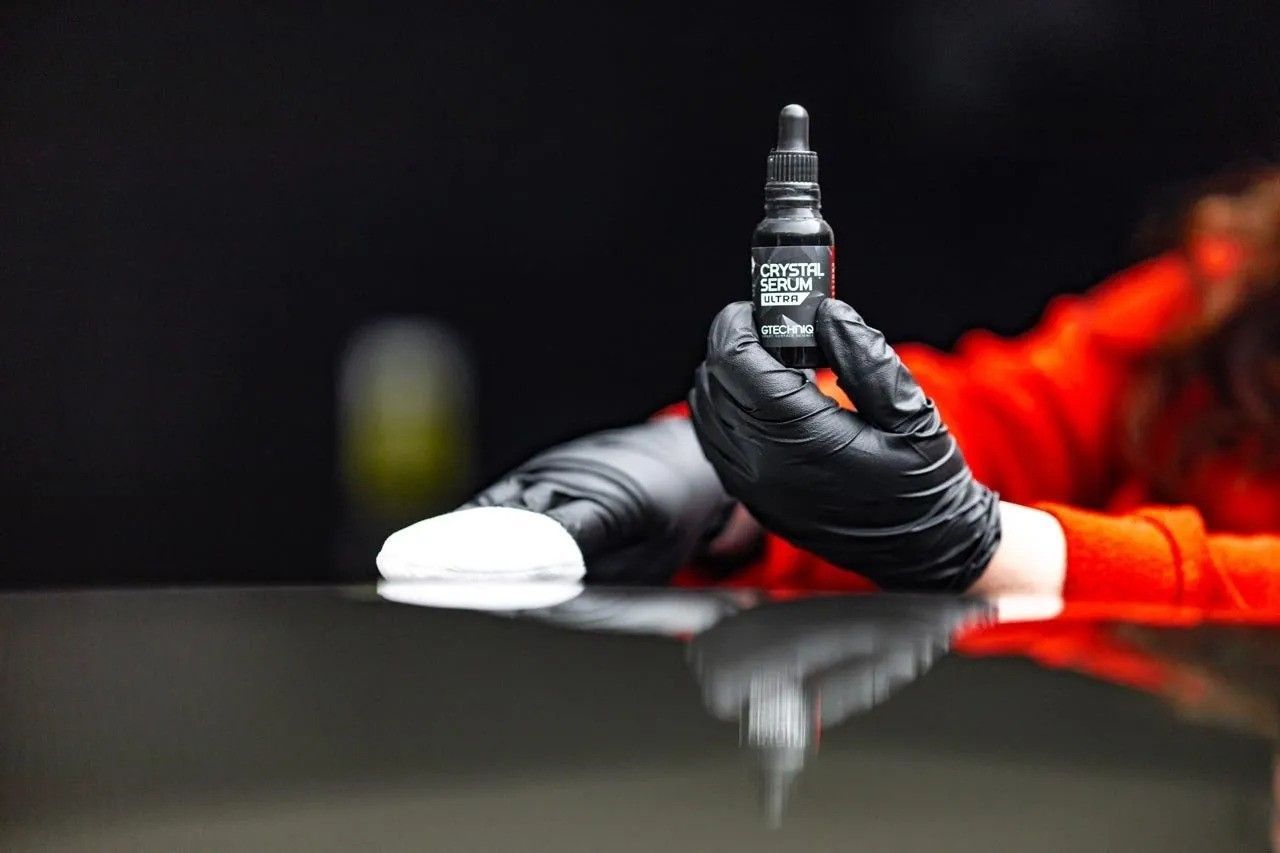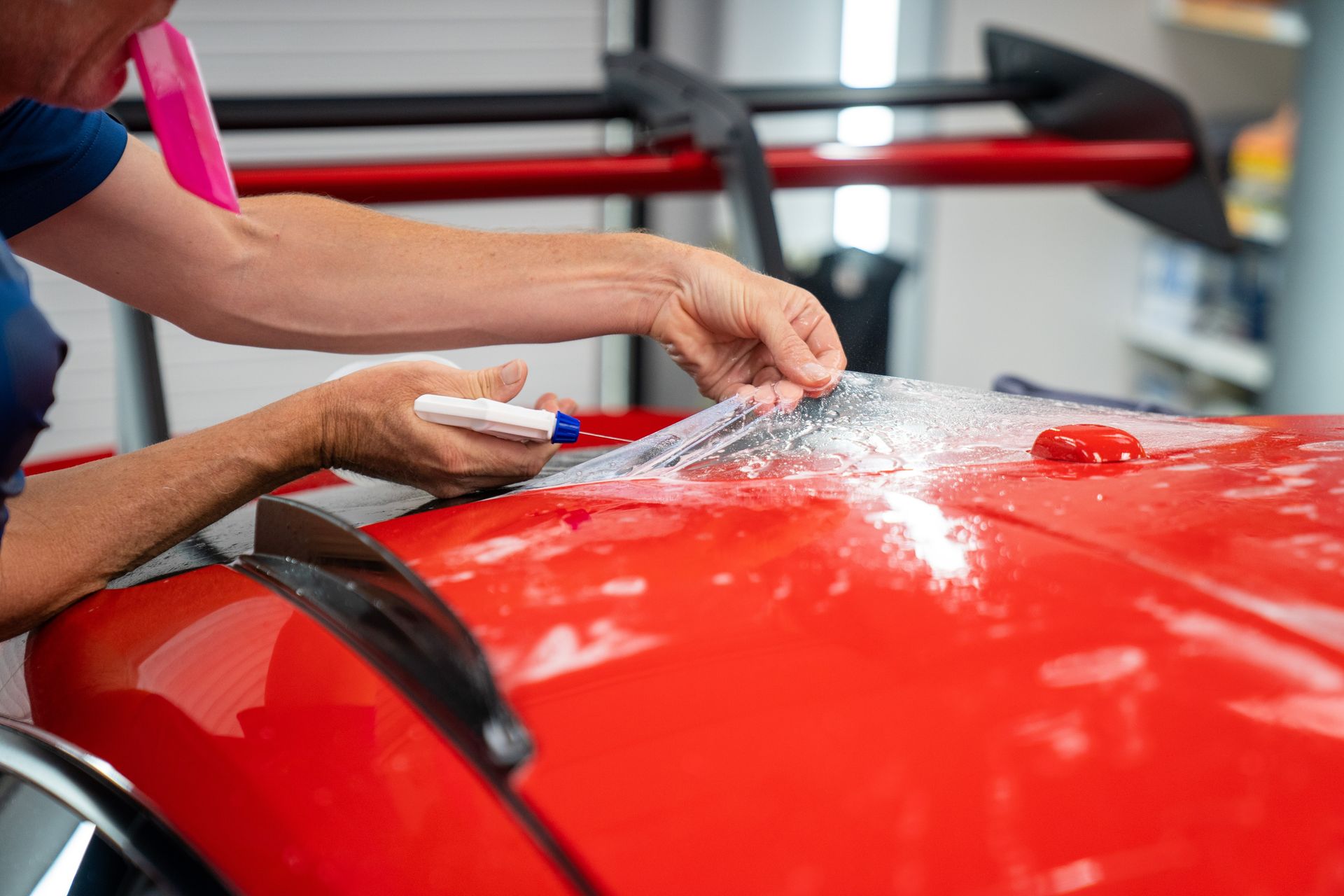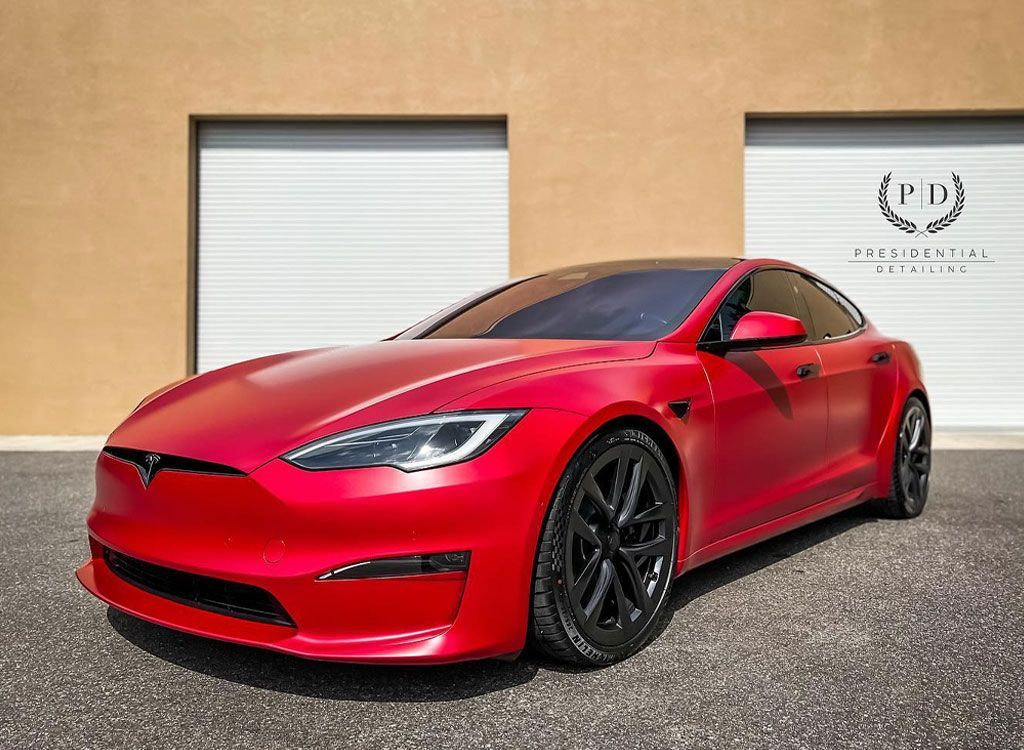Ceramic Coating vs. Waxing for Cars in Sarasota
CALL (813) 723-9679
GET A FREE ESTIMATEGleaming like a mirror under the Floridian sunshine or basking in a soft mystique after a Sarasota rain, your automobile represents more than just four wheels and an engine. It is your on-the-road persona, demanding the best care that you can offer. This battle for brilliance often boils down to a specific choice: ceramic coating or waxing?
When it comes to protecting your car's paint in the sunny climate of Sarasota, ceramic coating is the superior choice. Unlike traditional waxing, ceramic coatings offer long-lasting durability, enhanced gloss, and superior protection against UV rays, heat, and environmental pollutants. This article from Presidential Automotive Detailing provides a detailed comparison of both options and explains why ceramic coating is the recommended choice for cars in Sarasota.
Ceramic Coating vs. Waxing for Your Sarasota Car Protection
When it comes to protecting your vehicle and maintaining its glossy appearance, two popular options stand out: ceramic coating and waxing. Both methods offer distinct advantages and have their own unique applications. Understanding the differences between ceramic coating and waxing can help you make an informed decision about which option is best suited for your car's needs. Whether you choose a ceramic coating or wax, both provide a protective layer on the surface of your car. However, there are significant differences in terms of application process, longevity, and durability.
Differences in the Application Process
The application process is where ceramic coating and waxing diverge. Waxing involves applying a thin layer of wax to the surface of the car using a soft cloth or sponge. The wax needs to be spread evenly, allowed to dry, and then buffed off to create a smooth and shiny finish. Regular waxing is recommended every few months to maintain the protective layer. On the other hand, ceramic coating requires more meticulous preparation and expertise. It typically involves multiple steps, including thorough cleaning and decontamination of the vehicle's surface before the application of the ceramic coating using specialized tools. The coating is then left to cure for a specific period, forming a chemical bond with the paintwork that provides long-lasting protection. Due to the complexity of this process, it's often recommended to seek professional assistance for ceramic coating application.
While waxing may be more straightforward in terms of application, ceramic coating offers several benefits in terms of longevity and durability. Unlike wax, which can be easily stripped away by frequent washes or exposure to harsh weather conditions, ceramic coatings provide enhanced resistance against UV rays, chemical contaminants, oxidation, and other environmental contaminants. They also last significantly longer than traditional waxes, with some high-quality ceramic coatings offering protection for up to two years or more with proper maintenance.
Comparison of Longevity and Durability
When considering the best protection for your car in Sarasota, Florida, it's essential to compare the longevity and durability of ceramic coating and waxing. Ceramic coating is renowned for its remarkable durability, often lasting for several years with proper maintenance. This is due to its highly resilient nature, which provides excellent protection against UV rays, oxidation, and other environmental contaminants. On the other hand, traditional waxing generally lasts only a few months before needing reapplication to maintain its protective properties. Think of it this way: the ceramic coating acts as a shield that forms a strong bond with the vehicle's paint, creating a long-lasting barrier. Waxing, on the other hand, adds a temporary layer of protection that gradually wears off over time.
Ceramic coatings excel in terms of durability under harsh weather conditions as well. Whether it's intense sunlight or heavy rain common in Sarasota, the robust chemical composition of ceramic coatings ensures prolonged defense against these elements.
Benefits and Limitations of Ceramic Coating
Ceramic coating offers numerous advantages to car owners in Sarasota seeking premium protection for their vehicles. Firstly, it creates a hydrophobic surface that repels water and prevents dirt and grime from adhering to the paint. This makes cleaning significantly easier since water and contaminants bead up and slide off effortlessly. Additionally, ceramic coating enhances the gloss and shine of your car's paintwork, making it look freshly polished and vibrant. It also helps to minimize fading caused by UV radiation—particularly valuable in sunny regions like Sarasota, where excessive sunlight can accelerate paint damage and color degradation.
However, it's important to note that ceramic coatings have some limitations. The application process requires precision and expertise, making it best suited for professional installation to ensure optimal results. Ceramic coating is also not impervious to all forms of damage, such as scratches or rock chips. While it provides an additional layer of protection compared to waxing, it's still essential to practice caution and maintain regular care for your vehicle.
Impact on Car Aesthetics
When it comes to maintaining the aesthetic appeal of your vehicle, both ceramic coating and waxing play a crucial role. Ceramic coating forms a protective layer that enhances the shine and color depth of your car's paint. It creates a glossy finish that lasts for an extended period, providing a showroom-like appearance. On the other hand, waxing adds a temporary layer of protection and enhances the shine of your car, giving it a polished look. It is important to consider the long-term impact on your car's aesthetics when choosing between these two options.
Advantages and Disadvantages of Waxing
Now let's delve into the advantages and disadvantages of waxing your car. For decades, car enthusiasts have used waxing as a tried-and-true method to protect the paintwork of their vehicles. One significant advantage of waxing is its ease of application. You can easily purchase a variety of waxes from automotive stores or online platforms and apply them yourself. Waxing also provides an additional layer of protection against elements like UV rays and pollution.
However, there are some drawbacks to waxing as well. The most notable disadvantage is its temporary nature. While wax provides short-term benefits like glossiness and water-beading effects, it tends to wear off relatively quickly compared to ceramic coatings. Additionally, wax requires regular reapplication to maintain its full benefits. Depending on environmental factors like weather conditions or driving habits, you may need to wax your car every few months or even more frequently in order to sustain optimal protection. While waxing offers some advantages in terms of ease of application and protection against UV rays and other pollutants, it falls short when it comes to longevity and durability.
Considerations for Sarasota's Climate
When it comes to choosing the right protection technique for your vehicle in Sarasota, Florida, it's essential to take into account the unique climate of the region. With its hot and humid weather, frequent rain showers, and prolonged exposure to intense sunlight, vehicles face specific challenges that need to be addressed. The climate in Sarasota can lead to accelerated wear and tear on your car's exterior, making it crucial to choose a protection technique that can withstand the elements and provide long-lasting defense.
Living in Sarasota means the sun shines relentlessly throughout most of the year. The intense UV rays beat down on your vehicle's paint, causing fading and oxidation over time. Not to mention the occasional tropical storms that can bring heavy rains and potential water damage. These are just some of the factors you need to consider when choosing between ceramic coating and waxing as protection methods for your car.
Which protection technique is ideal for your vehicle?
Ceramic coating offers unmatched durability and long-term protection for your vehicle's paintwork. Its advanced formulation creates a strong bond with the surface of your car, forming a protective layer that is resistant to UV rays, chemical stains, bird droppings, and other environmental contaminants. This makes it an excellent choice for cars facing the harsh conditions of Sarasota's climate. On the other hand, waxing provides a more traditional approach to protecting your vehicle. It creates a thin layer of protection against dirt, dust, and light scratches. While waxing does not offer the same level of durability as ceramic coating, it still provides a level of shine and glossiness that many car enthusiasts appreciate.
Some argue that regular applications of wax can provide sufficient protection when done diligently, especially for those on a budget. While this can be true to some extent, it's important to note that wax tends to wear off more quickly than ceramic coatings, requiring more frequent reapplications to maintain its effectiveness. Ultimately, the ideal protection technique for your vehicle depends on your specific needs and preferences. If you desire long-term durability and protection against Sarasota's harsh climate, ceramic coating may be the better choice. Conversely, if you prefer a simpler maintenance routine and are willing to compromise on longevity, waxing might suffice.
Top Ceramic Coating Service in Sarasota, FL
Are you looking to elevate your vehicle's appearance and protection to unmatched levels? Look no further than Presidential Automotive Detailing, the undisputed leader in top-tier ceramic coating services right here in Sarasota, FL. With a commitment to excellence and meticulous attention to detail, our team ensures that your prized possession receives nothing but the best. Experience unparalleled shine, durability, and protection that only our state-of-the-art ceramic coatings can offer. Don't settle for ordinary; choose Presidential Automotive Detailing and transform your car into a masterpiece.
Schedule your appointment today
and discover why we're Sarasota's trusted choice for automotive perfection. Your car deserves nothing less!


